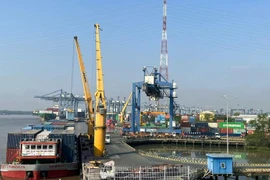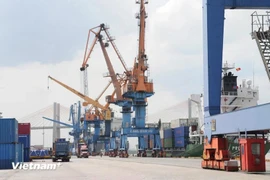Hanoi (VNA) – In the wake of the US' fresh announcement of a 46% tariff on Vietnamese exports, Director of the Ministry of Industry and Trade (MoIT)’s Department of Foreign Market Development Ta Hoang Linh remains optimistic about the potential for negotiations to achieve a mutually beneficial outcome.
Speaking to the press in Hanoi on April 3, Linh expressed the MoIT's regret over the US tariff decision, effective from April 9.
Highlighting the complementarity of the two economies, including their export and foreign trade structures, he noted that Vietnam’s exports to the US primarily compete with third-country goods, not US products, while providing US consumers with affordable, quality options.
The most-favoured-nation (MFN) tariff rates Vietnam is imposing on imports average 9.4%, so the reciprocal tariff of up to 46% that the US plans to levy on Vietnamese goods lack scientific basis and unfair, not reflecting Vietnam's goodwill and efforts in addressing trade imbalance between the two countries over the recent past, he went on.
The Vietnamese Government, ministries, and sectors have recently taken proactive steps to address many problems facing US companies operating in Vietnam, including a decree reducing the MFN tax rates which benefits 13 categories of US goods. Besides, a large number of US investment projects have had their difficulties tackled, he said.
According to the White House, the reciprocal tariffs on trade partners of the US aim to address the injustices of global trade, reshore manufacturing, strengthen national security, and boost economic growth, with the tariffs remaining in place until trade deficits and perceived unfair practices are resolved.
Therefore, Linh noted, the MoIT holds that the two sides still have room to negotiate to achieve a mutually beneficial outcome.
As soon as the US announced the tariffs, Minister of Industry and Trade Nguyen Hong Dien sent a diplomatic note requesting US authorities delay the imposition to allow for constructive dialogue to seek a reasonable solution for both sides, Linh said, adding that the MoIT is arranging a ministerial phone call and technical talks with the Office of the US Trade Representative (USTR) as soon as possible.
According to the official, the MoIT set an export growth target of 12% for this year, equivalent to about 450 billion USD, driven by a recovering global economy and Vietnam's robust network of 17 free trade agreements (FTAs) with over 60 countries and territories. While the US tariffs may cause certain adverse impacts on the export growth target if the two sides fail to seek a positive solution, he assured that the ministry had foreseen such risks and prepared a detailed action plan.
The MoIT has submitted proposals to the Government and issued guidance to enterprises to mitigate potential impacts, he said.
To meet export targets, Linh called on businesses to leverage Vietnam’s FTAs and 70 bilateral cooperation mechanisms while diversifying into new markets. With the US accounting for 13% of global imports and 30% of Vietnam’s export turnover, he pointed to the vast potential in the remaining 87% of global markets. The MoIT, he added, is intensifying efforts to open these pathways.
The ministry is stepping up FTA negotiations with new markets such as the Middle East, Latin America, Central Asia and other emerging markets. It is also enhancing trade promotion, upgrading logistics infrastructure, and expanding Vietnam’s network of overseas trade offices.
Looking ahead, Linh affirmed that Vietnam will restructure its economy and diversify markets, products, and supply chains to ensure fast and sustainable development. The implementation of concerted measures will help Vietnamese businesses improve their resilience to global trade volatility and maintain long-term export sustainability./.

See more
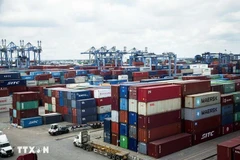
HCM City's Q1 growth hits five-year high, but still below expectations
The 7.51% growth in Q1 was an encouraging sign, but this figure also indicates numerous challenges to the city's efforts to achieve its annual growth target of 8.5–10%.

Vietnam advised to flexibly adapt to newly US tariff policy
Vietnam should continue bilateral negotiations with the US administration on major export commodities while guiding businesses in diversifying markets, attracting more US investments, and increasing purchases of goods from the US, an analyst has said.
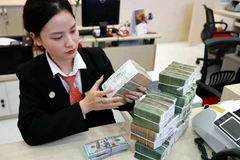
Reference exchange rate rises sharply on April 4
The daily reference exchange rate for the US dollar increased 32 VND from the previous day to stand at 24,886 VND/USD on April 4.
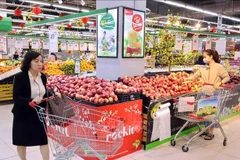
Hanoi keeps CPI well under control
The CPI for the first quarter of 2025 increased by 2.75% compared to the same period last year, indicating that inflation remains well under control.

Central bank’s credit growth target helps real estate recovery
Experts said a large portion of this influx of cash will likely flow into promising investment avenues like real estate and securities, especially given the current volatility in the gold market.
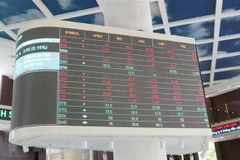
Vietnam to launch KRX trading system on May 5
The KRX system is currently in its final testing phase before full implementation. During this period, securities firms are conducting simulated trading sessions as if on a normal trading day.

Vietnam learns from France's experiences in carbon market management
Vietnam plans to launch a pilot carbon trade exchange in June, and officially operate and connect it with regional/international floors in 2029.

PM demands specific, competitive policies to develop int’l financial centres
PM Pham Minh Chinh stressed that it is necessary to build modern, digitally advanced financial centres with smart operation and management systems as well as high-quality human resources.

Retail petrol prices up in latest adjustment
Under the new pricing structure, E5 RON92 and RON95-III have increased by 341 VND and 495 VND per litre to a maximum of 20,373 VND (0.79 USD) and 20,919 VND per litre, respectively.

Lumitel – A bright spot in Vietnam-Burundi collaboration
After a decade of operations, Lumitel has become the leading telecommunications provider in Burundi and one of the largest contributors to the Burundian government's budget, providing stable employment for over 60,000 workers and indirectly creating around 100,000 jobs.

Vietnam’s trade shines as a pillar of economic growth
This robust performance, representing an additional 12 billion USD compared to the same period last year, underscores trade's resilience amid global economic uncertainties.
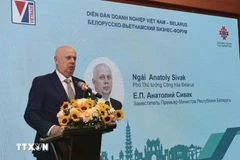
Ample room remains for Vietnam - Belarus trade cooperation
To further develop the Vietnam-Belarus economic and trade relationship, it is essential to enhance trade promotion and investment initiatives such as trade fairs, forums, thematic workshops, and trade connections, which serve as an important bridge for businesses from both sides to meet, connect, and seek cooperation opportunities.
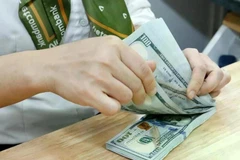
Reference exchange rate up 3 VND on April 3
The State Bank of Vietnam set the daily reference exchange rate for the US dollar at 24,854 VND/USD on April 3, up 3 VND from the previous day.

Vietnam, Laos boost trade at Savannakhet expo
Vice Governor of Savannakhet Saensak Soulisak highlighted the exhibition’s role in expanding trade collaboration, enabling businesses to connect, share experience, and explore investment prospects. He also noted its significance in promoting local products to a wider market.
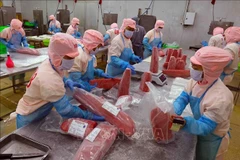
Vietnam’s seafood exports surge to 2.45 billion USD in Q1
Industry insiders pointed to stable raw material prices and a strategic shift towards higher-value processed products as key factors underpinning the strong performance of the two top earners -shrimp and tra fish.
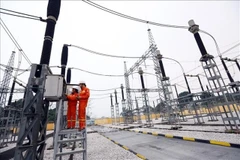
Vietnam sets new framework for retail electricity pricing
The decision, signed on March 31, sets the maximum retail electricity price at 2,444.09 VND per kWh (0,095 USD), while the minimum price is set at 1,826.22 VND per kWh.
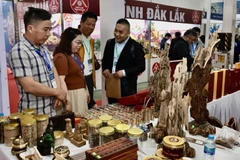
Vietnam Expo 2025 opens, spotlighting digital transformation, innovation
This year’s edition, themed “Step together in a digitised world,” has attracted around 400 businesses from 18 countries and territories, with over 500 booths. Alongside traditional networking, it introduces online business-to-business (B2B) matching, enabling year-round connections.

Private sector encouraged to join major national programmes, projects
It must fully unleash the productive capacity and resources of the country through the private sector; mobilise all private resources for national development; harness the effectiveness of internal forces, including human, natural resources, history, and culture, while effectively combining them with external resources such as capital, technology, human resources, and management experience, he said.

Annual Vietnam-Cambodia business dialogue held in Cambodia
The annual business dialogue in Cambodia attracted around 150 delegates, including Vietnamese businesses and Vietnamese-origin companies operating in Cambodia across various sectors such as finance, banking, insurance, telecommunications, agriculture, construction, interior design, food services, transportation, logistics, trade, healthcare, and tourism.
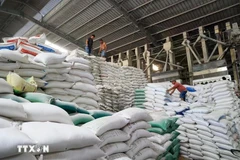
Vietnam-Cuba Business Forum held in Hanoi
Addressing the event, Cuban Ambassador Rogelio Polanco Fuentes affirmed that Cuba will always stand alongside the Vietnamese Government and business community in their efforts to achieve the challenging target socio-economic goals.
